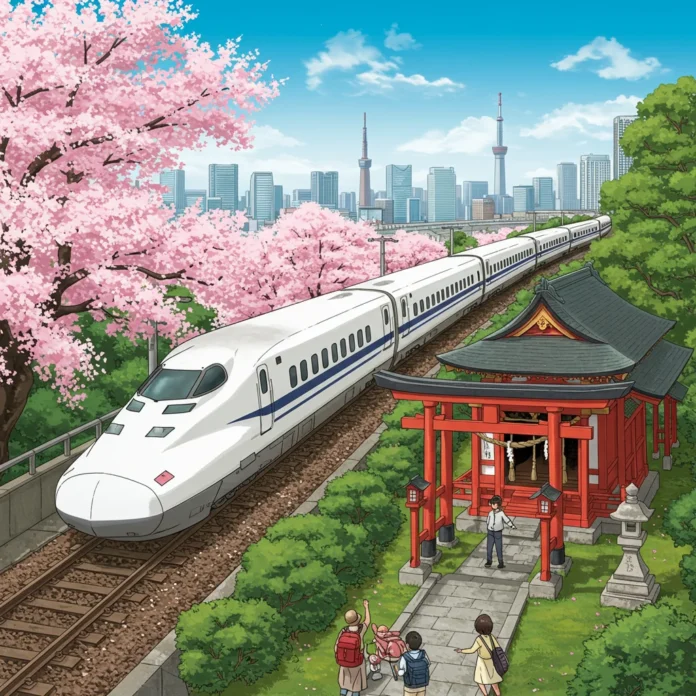Introduction: Embarking on a Tokyo Bullet Train Adventure
Traveling through Tokyo on the Shinkansen is a sensory rush: the whisper of the train doors, the soft vibration as you accelerate, and the ever-changing cityscape outside your window. For travelers seeking both speed and culture, few experiences rival the combination of high-speed rail journeys and visits to Tokyo’s iconic shrines. In this guide, we share everything you need to know for a seamless, unforgettable bullet train adventure—combining modern thrills with timeless tradition.
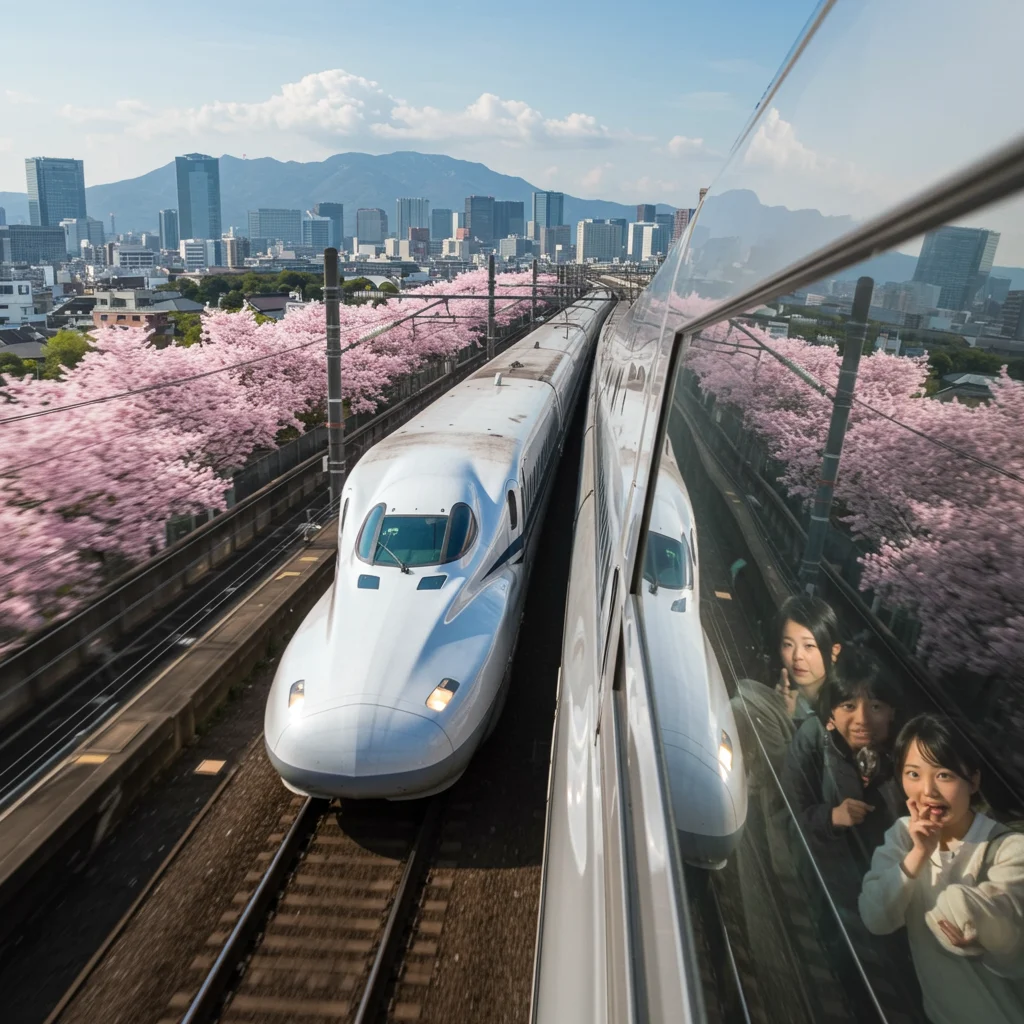
What Makes Tokyo’s Bullet Trains Unique?
The Shinkansen is not just a marvel of engineering—it is a symbol of Japan’s dedication to punctuality, comfort, and cutting-edge technology. Let’s explore what sets these trains apart from any other mode of travel.
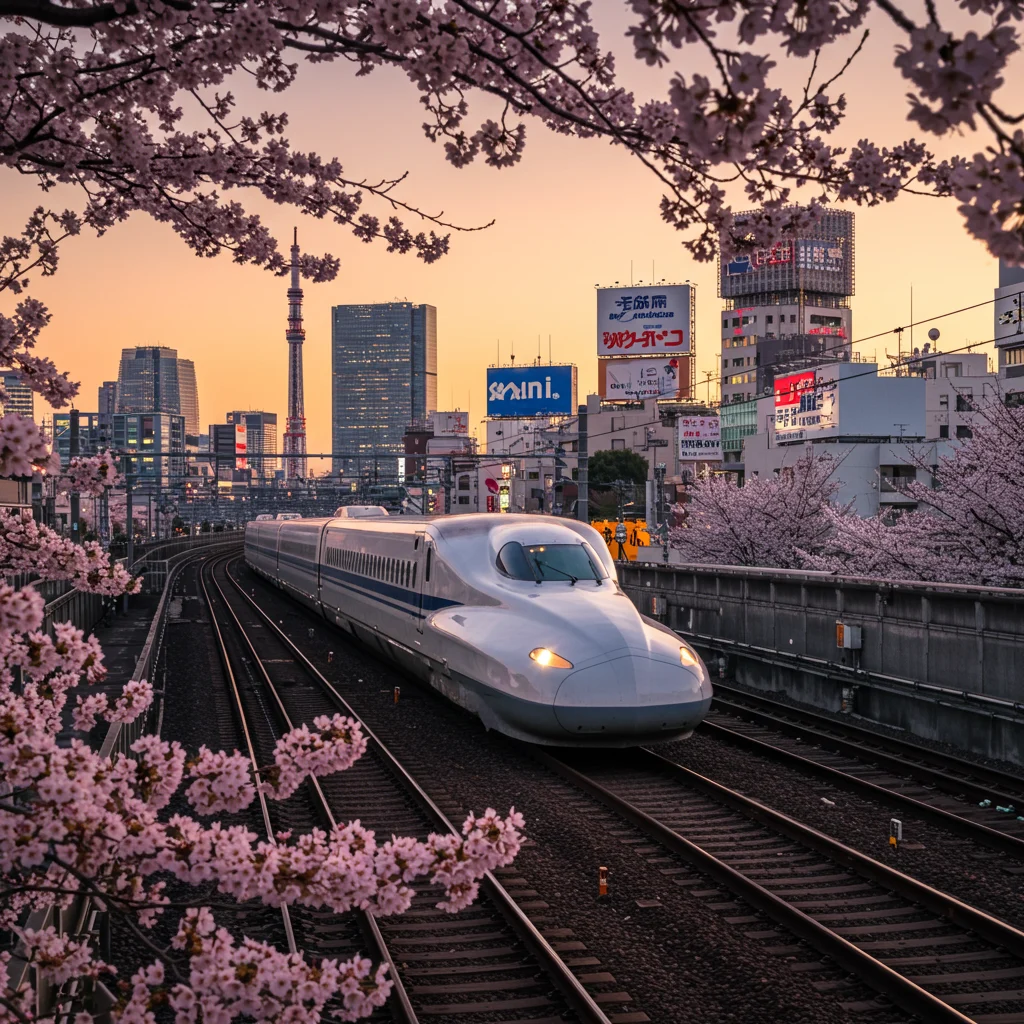
A Brief History of the Shinkansen
Japan introduced the Shinkansen in 1964, just ahead of the Tokyo Olympics. This groundbreaking train changed the way people moved across the country, reducing travel times between major cities and setting global standards for high-speed rail.
Over the decades, the network has expanded, connecting Tokyo to distant regions and making cross-country journeys efficient and comfortable.
How Fast Can the Shinkansen Go?
The thrill of bullet train speed is unmistakable. Most Shinkansen lines operate at speeds of up to 320 km/h (200 mph), making it possible to reach Kyoto from Tokyo in just over two hours. The sensation of gliding smoothly at such velocity, with the landscape blurring by, is exhilarating yet remarkably quiet.
Types of Bullet Trains in Tokyo
Several Shinkansen models serve Tokyo, each with its own features and routes:
- Nozomi: The fastest service, with limited stops.
- Hikari: Slightly slower, but still rapid and convenient.
- Kodama: Stops at all stations, ideal for those exploring lesser-known towns.
Other lines, such as the Tohoku and Joetsu Shinkansen, offer sleek, colorful trains with advanced amenities.
Why Choose the Bullet Train for Your Tokyo Adventure?
Opting for the bullet train means enjoying reliability, comfort, and the unique chance to watch Japan’s scenery change from urban sprawl to tranquil countryside in moments. With spacious seating, seamless connections, and a reputation for safety, the Shinkansen is the preferred way for many to access historic cities, scenic regions, and spiritual sites.
Planning Your Bullet Train Journey
A successful Shinkansen adventure starts with informed planning. From ticketing to timing, a little preparation ensures a smooth, enjoyable ride.

When Is the Best Time to Visit Tokyo by Bullet Train?
The most pleasant seasons for a bullet train journey are spring (March to May) and autumn (September to November). Cherry blossoms and fall foliage add vibrant color to the landscape, especially as you zip past countryside and city parks. Avoid the Golden Week holidays and New Year’s, when trains are busiest.
How to Book Shinkansen Tickets
You may purchase Shinkansen tickets at station counters, online, or via ticket machines. For those who wish to plan your trip in advance, booking through reputable platforms like Viator offers convenience and peace of mind.
Should You Get a Japan Rail Pass?
The Japan Rail Pass is a cost-effective option for travelers planning multiple long-distance journeys. Valid on most Shinkansen lines (excluding Nozomi and Mizuho), the pass can be purchased before you arrive in Japan and activated at your convenience. Consider your itinerary to determine if this pass matches your travel plans.
Packing Tips for a Bullet Train Adventure
Pack light, as luggage space is limited. Bring essentials in a compact bag and keep valuables close. Don’t forget a camera, snacks, and a reusable water bottle. Layered clothing helps you stay comfortable in changing temperatures, both on the train and at various destinations.
Top Shinkansen Routes from Tokyo
Tokyo’s Shinkansen network unlocks access to some of Japan’s most celebrated cities and landscapes. Each route offers its own unique blend of history, cuisine, and culture.
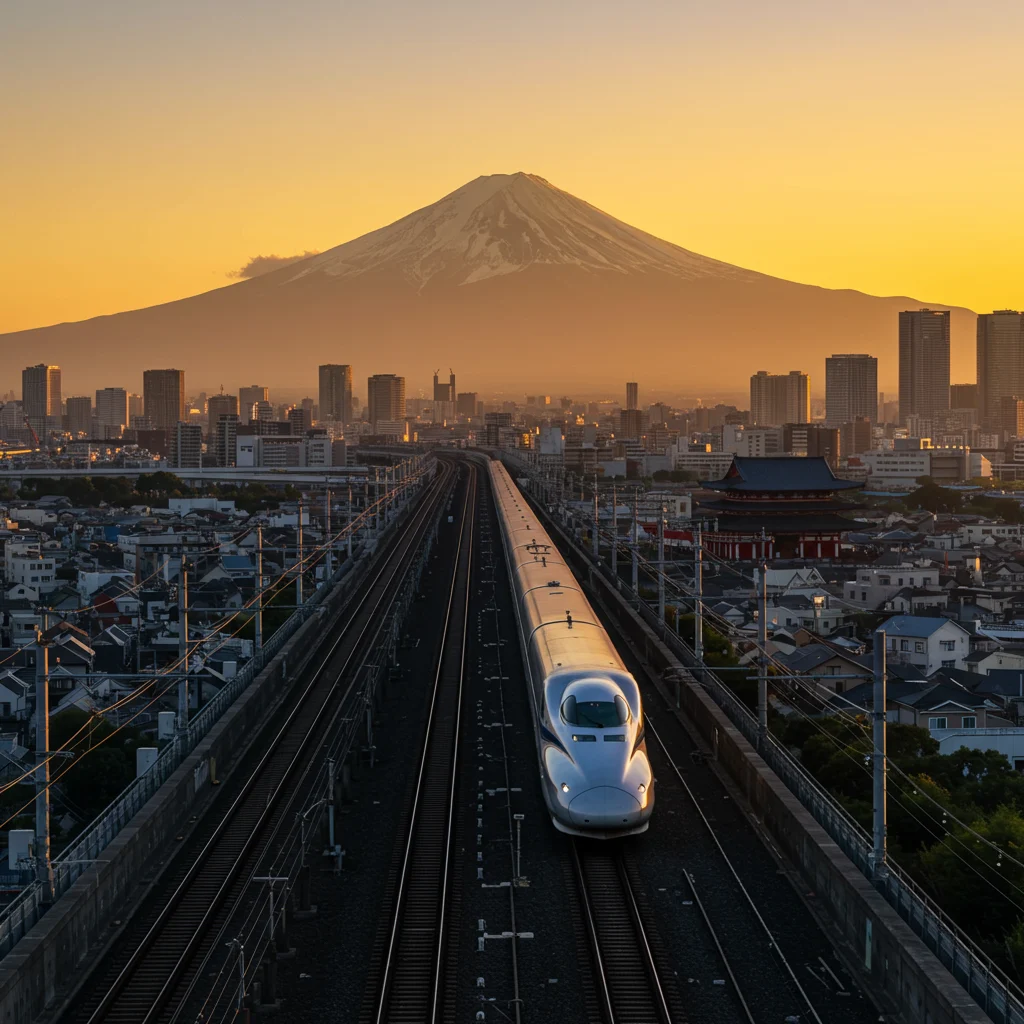
Tokyo to Kyoto: The Classic Route
Travelers often choose the Tokyo-Kyoto route for its seamless connection between the capital and Japan’s ancient heart. In just over two hours, you move from futuristic skyscrapers to tranquil temples and gardens. For those interested in Kyoto’s traditional side, we recommend reading about the Kyoto & Nara Day Tour for a deeper dive into these historic cities.
Tokyo to Osaka: High-Speed to Culinary Delights
The journey to Osaka delivers you to one of Japan’s most dynamic food destinations. From sushi to street food, Osaka’s culinary scene is legendary. The bullet train makes it possible to enjoy a full day of feasting and sightseeing, then return to Tokyo by nightfall.
Tokyo to Hakone: Gateway to Hot Springs and Views
Hakone is a favorite for those craving nature and relaxation. The route offers glimpses of Mount Fuji and quick access to hot springs, art museums, and lakeside trails. The air here feels crisp and rejuvenating, especially in early morning or late afternoon.
Tokyo to Nikko: Shrines and Scenic Beauty
Nikko’s UNESCO-listed shrines and forested hills provide a peaceful escape from city bustle. The train ride itself offers scenic river crossings and mountain vistas, while Nikko’s spiritual sites reward visitors with rich history and ornate architecture.
Tokyo to Sendai: Northern Excursions
Sendai, the largest city in Tohoku, is renowned for its leafy avenues and regional cuisine. The Shinkansen whisks you there in under two hours, making it an excellent choice for travelers eager to experience northern Japan’s hospitality and culture.
What to Expect Onboard the Shinkansen
Riding the Shinkansen is about more than speed—it’s an experience defined by comfort, service, and thoughtful amenities. Here’s what you’ll find onboard.
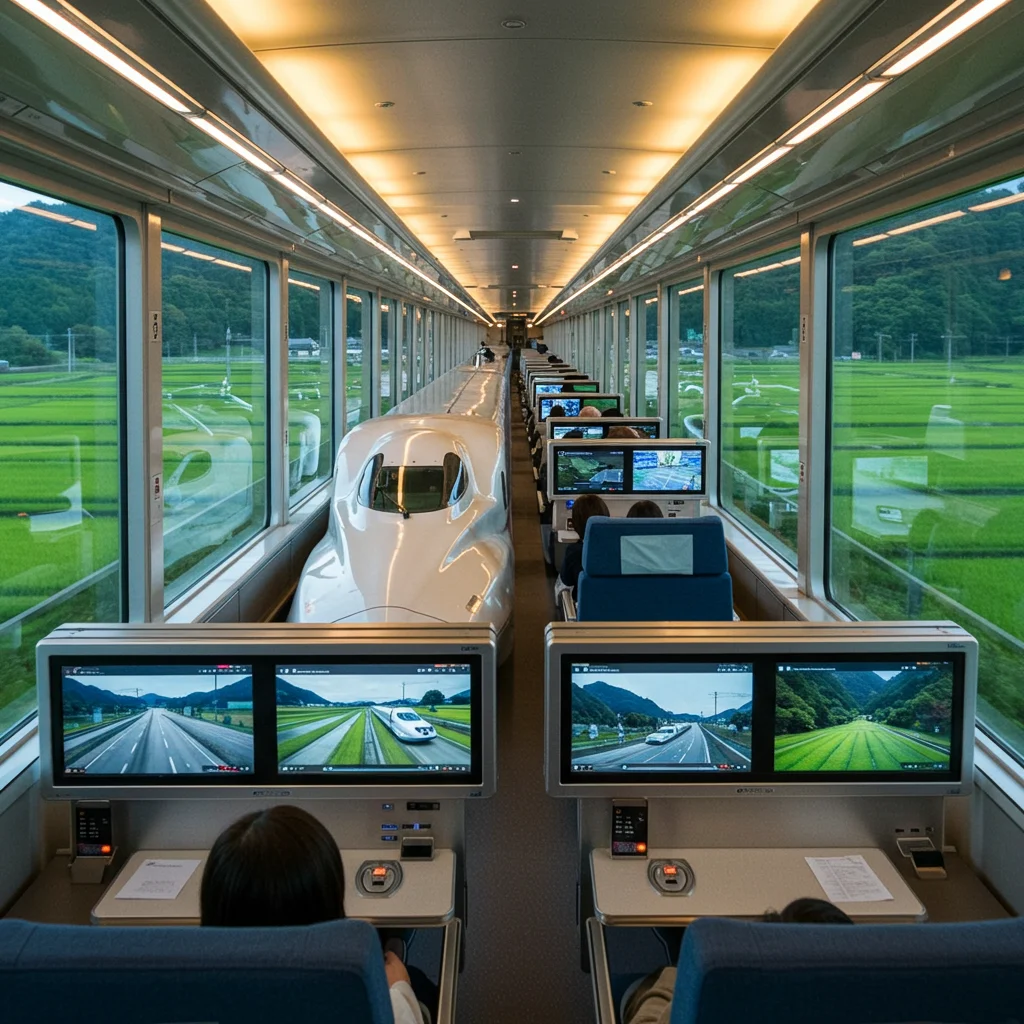
Seating Classes and Comfort Levels
There are three main seating classes:
- Ordinary Class: Comfortable, with ample legroom and reclining seats.
- Green Car: Comparable to first class, offering extra space and quieter cabins.
- Gran Class: The ultimate in luxury, with wide seats and premium service.
Even in the standard class, seats are plush and windows are large, letting you enjoy the passing scenery.
Onboard Services and Amenities
Attendants pass through the cars offering snacks, beverages, and bento boxes. Clean restrooms, power outlets, and luggage racks add to the convenience. The quiet, orderly environment makes it easy to relax, read, or plan your day.
Can You Eat and Drink on the Shinkansen?
Eating and drinking are not only allowed but encouraged. Many travelers purchase ekiben—specialty bento boxes—before boarding. The ritual of opening a beautifully wrapped meal as the scenery whisks by is a quintessential part of the Shinkansen experience.
Traveling with Children or Groups
Family and group travel is smooth on the Shinkansen. Reserved seating, accessible restrooms, and luggage space make it easy for everyone to travel together. Children often delight in the novelty of high-speed rail, and many trains have child-friendly amenities.
Bullet Train Etiquette: Do’s and Don’ts
Japanese train etiquette is rooted in respect. Keep conversations quiet, set devices to silent, and dispose of trash responsibly. If you need to take a phone call, step into the designated areas near the doors. Observing these customs ensures a pleasant journey for all.
Capturing the Thrill: High-Speed Views and Experiences
One of the joys of Shinkansen travel is the ever-changing view. Fields, mountains, and cityscapes roll by in a mesmerizing blur.
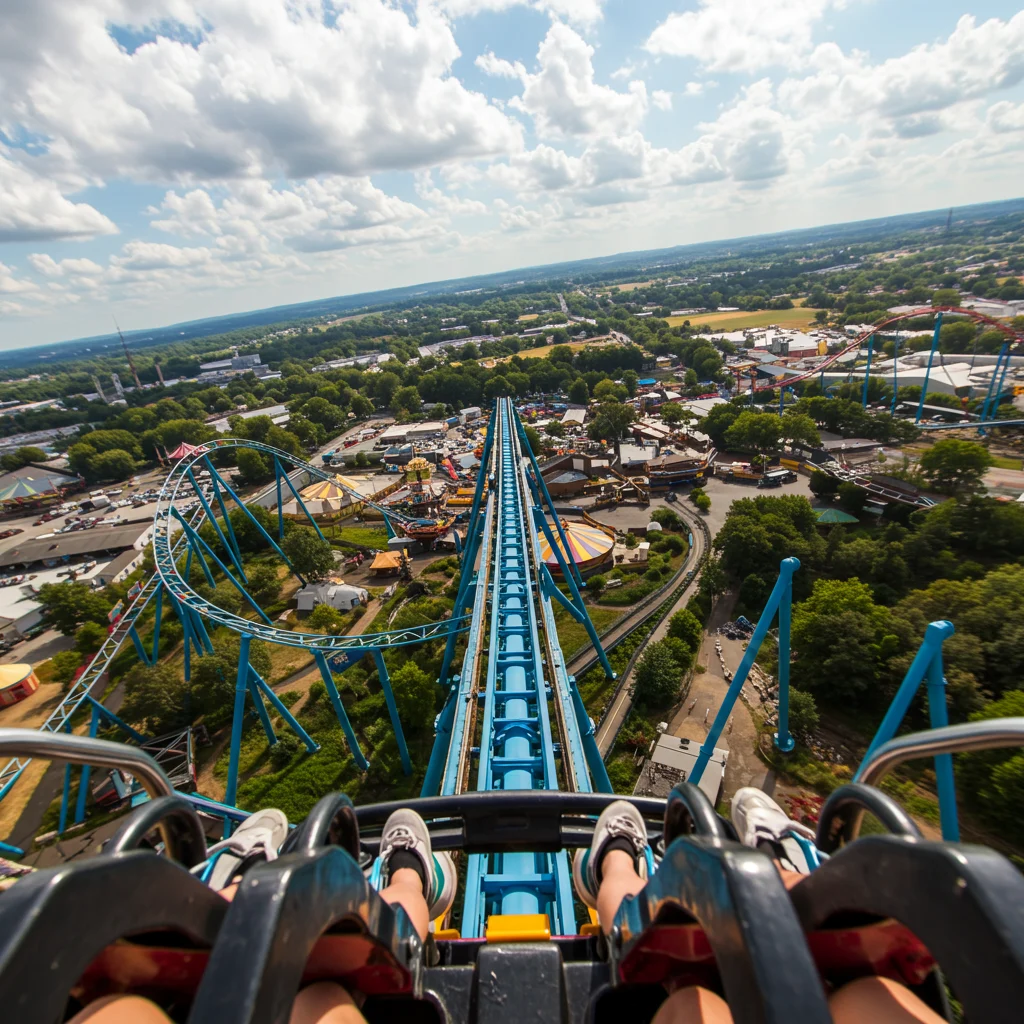
Best Scenic Moments from the Train Window
The landscape transforms rapidly: neon-lit Tokyo gives way to rice paddies, distant peaks, and traditional villages. Early morning rides often reveal mist rising from rivers, while late-day journeys can offer dramatic sunsets over the countryside.
Tips for Taking Photos and Videos on the Shinkansen
For the best shots, choose a window seat and keep your camera ready. Use a fast shutter speed to reduce motion blur. Reflections can be minimized by holding the lens close to the glass and avoiding flash. Quietly capturing memories helps preserve the peaceful atmosphere onboard.
How to Spot Mount Fuji from the Bullet Train
Mount Fuji is visible on clear days between Tokyo and Kyoto/Osaka. For the best view, sit on the right side of the train when heading west. The sight of Japan’s iconic peak, snow-capped and majestic, is a highlight for many travelers.
As experts often say:
“Travel is about the journey as much as the destination. The Shinkansen lets you savor both in a single, exhilarating ride.”
Tokyo’s Iconic Shrines: A Spiritual Journey
Tokyo’s shrines offer quiet sanctuaries amid the city’s buzz. Each site tells a unique story, blending ancient rituals with everyday life.
![]()
What Are the Most Famous Shrines in Tokyo?
Tokyo’s most renowned shrines include Meiji Shrine, Senso-ji Temple, Nezu Shrine, and Hie Shrine. Each offers a distinct atmosphere, from forested paths to vibrant city settings.
Meiji Shrine: Tokyo’s Tranquil Oasis
Nestled in a vast forest near Harajuku, Meiji Shrine offers a peaceful retreat from urban energy. The approach, lined with towering trees and the scent of cedar, invites quiet reflection. It is a favorite for both locals and travelers seeking a moment of serenity.
Senso-ji Temple: History and Culture
As Tokyo’s oldest temple, Senso-ji in Asakusa draws visitors with its imposing gates, incense-filled courtyards, and lively shopping streets. The sound of temple bells and the aroma of sweet snacks evoke a sense of timeless tradition.
Nezu Shrine: Hidden Gem of Old Tokyo
Tucked away in a historic neighborhood, Nezu Shrine charms visitors with its winding paths, azalea gardens, and rows of vermilion torii gates. It feels like a step into the city’s past, especially during spring’s vibrant bloom.
Hie Shrine: Urban Spirituality
Located near the government district, Hie Shrine is known for its striking red torii tunnel and panoramic city views. The contrast of ancient rituals against a backdrop of skyscrapers is uniquely Tokyo.
How to Visit Shrines Respectfully
When visiting shrines, bow at the entrance, cleanse your hands at the purification fountain, and maintain a quiet demeanor. Photography is usually permitted, but avoid flash and respect areas marked as sacred.
Exploring Shrines Along Bullet Train Routes
Many of Japan’s most revered shrines are easily accessible from Tokyo by Shinkansen. Here are some highlights along popular routes.
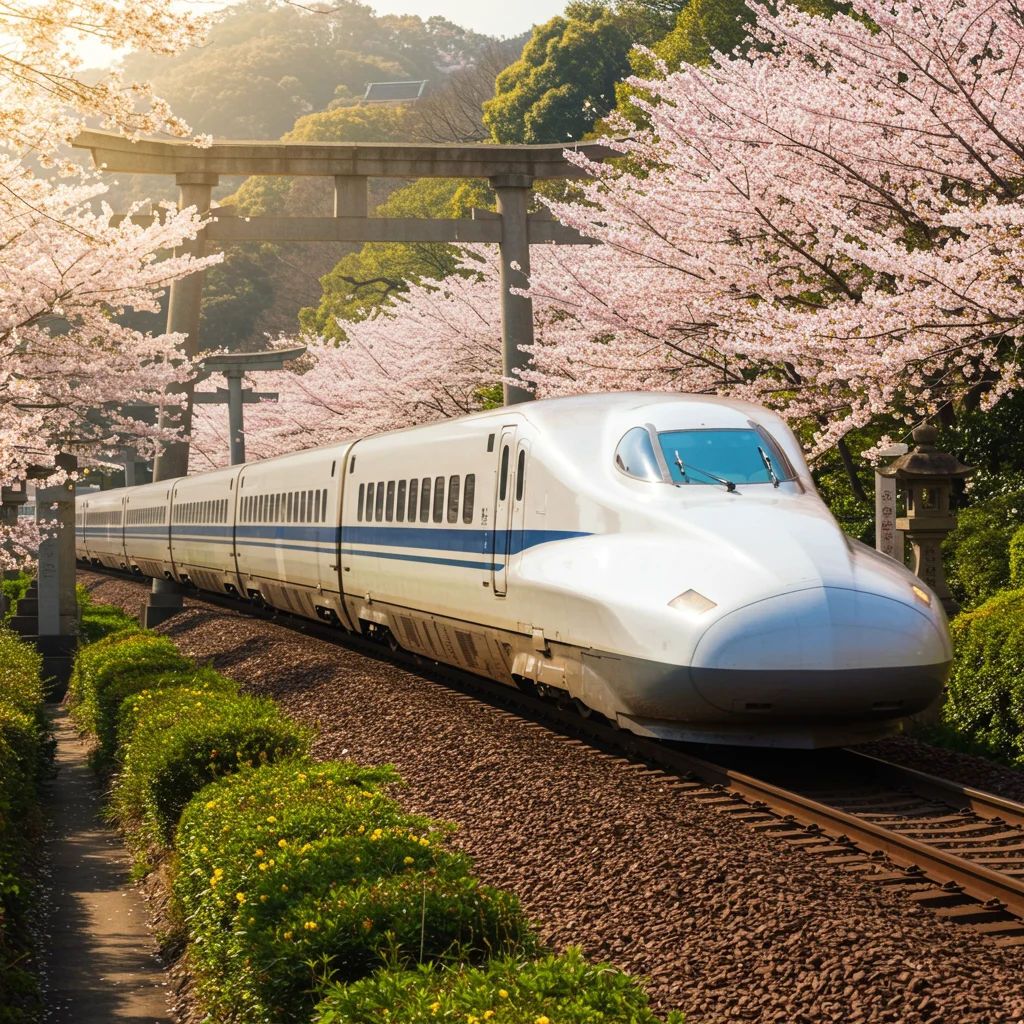
Kyoto’s Fushimi Inari Taisha: The Torii Tunnel
This world-famous shrine is celebrated for its thousands of vermilion torii gates, forming a winding path up Mount Inari. Walking beneath these gates, you hear the soft crunch of gravel and the distant sound of prayer bells—a multisensory experience that lingers long after your visit. For more on Kyoto’s spiritual and scenic wonders, see our feature on the Kyoto’s Bamboo Forest: Arashiyama Bike Tour Adventure.
Nikko’s UNESCO Shrines: A Day Trip Guide
The ornate carvings and vibrant colors of Nikko’s Toshogu Shrine are breathtaking. Surrounded by cedar forests and mountain air, it’s a place to appreciate both artistry and tranquility. Nikko is an ideal day trip from Tokyo by Shinkansen.
Hakone Shrine: Lakeside Serenity
Set on the shores of Lake Ashi, Hakone Shrine is famous for its lakeside torii and misty mountain backdrop. The approach through towering cedars creates a hushed, reverent mood, especially in the early morning light.
Osaka’s Sumiyoshi Taisha: Unique Architecture
Sumiyoshi Taisha stands out for its distinctive, straight-roofed style and tranquil gardens. The shrine’s bright vermilion bridges and peaceful ponds provide a welcome respite in the heart of Osaka.
What Rituals Should You Try at Japanese Shrines?
Participate in rituals such as drawing omikuji (fortune slips), offering coins at the main hall, and ringing the bell to announce your presence to the deities. These small acts connect you to centuries of tradition and deepen the spiritual aspect of your journey.
Combining Thrills and Tradition: Sample Itineraries
Balancing the excitement of high-speed travel with the tranquility of shrine visits creates a rich, memorable adventure. Here are some sample itineraries for different types of travelers.

One-Day Bullet Train and Shrine Adventure
Start your morning with a Shinkansen ride to Kyoto, visit Fushimi Inari Taisha, enjoy local cuisine, and return to Tokyo by evening. This itinerary offers a taste of both speed and spiritual heritage in a single day.
Weekend Getaway: High-Speed Exploration
Spend a weekend exploring Osaka’s food scene, Hakone’s hot springs, and Tokyo’s historic shrines. With the efficiency of the bullet train, you can experience diverse regions without feeling rushed. Those seeking even more excitement may want to check out our adventure holiday package suggestions.
Family-Friendly Itinerary Suggestions
Families can combine educational visits to shrines with fun activities like boat rides on Lake Ashi or exploring interactive museums near train stations. The bullet train’s comfort and reliability make it an excellent choice for travelers of all ages.
How to Maximize Your Time Between Trains and Shrines
Plan shrine visits around your train schedule, taking advantage of lockers at stations to store luggage. Purchase tickets and reserve seats in advance to minimize wait times, and choose shrines close to major stations for efficient sightseeing.
Bullet Train Stations: More Than Just Transit Hubs
Major Shinkansen stations in Tokyo are destinations in their own right, offering shopping, dining, and cultural experiences.
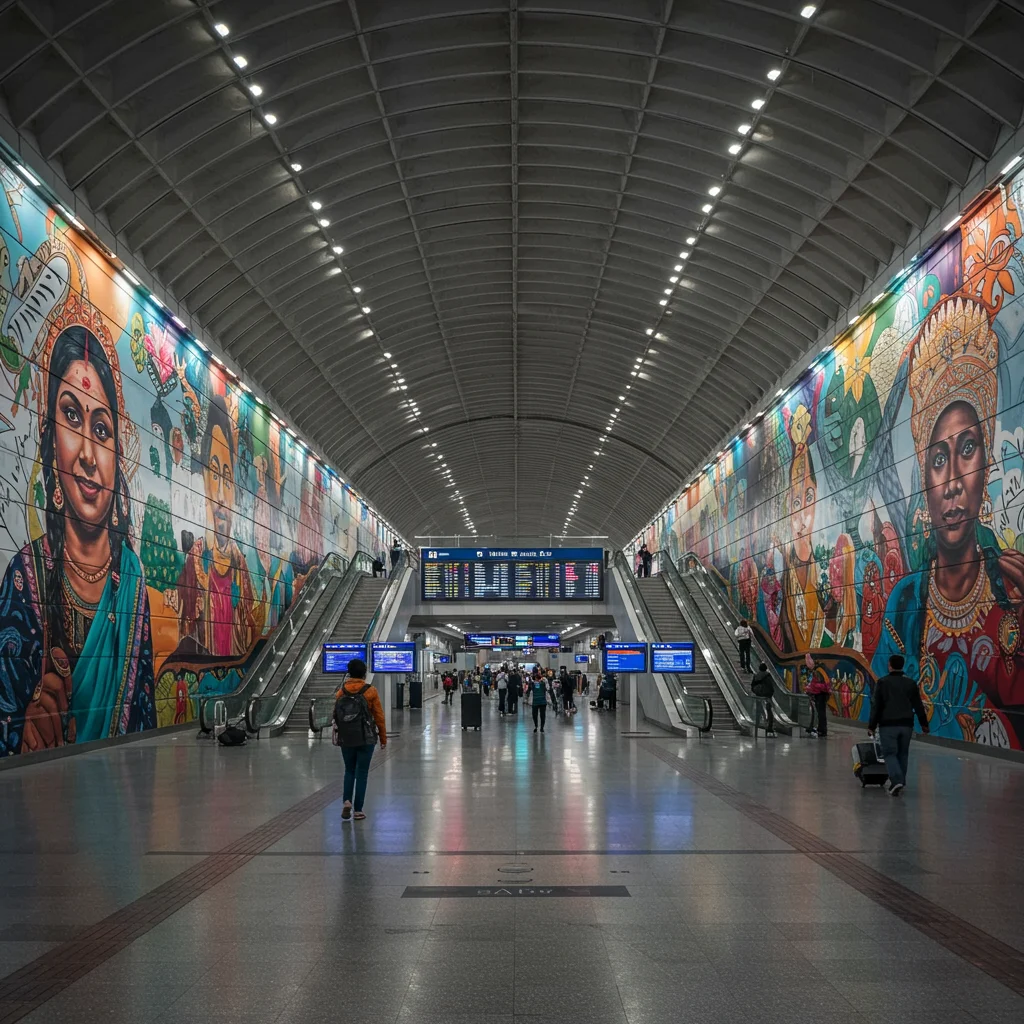
Tokyo Station: History, Shopping, and Eats
With its red-brick façade and elegant dome, Tokyo Station blends historic charm with modern amenities. Inside, you’ll find gourmet restaurants, souvenir shops, and even a hotel. The station’s bustling corridors are filled with the aroma of freshly baked pastries and the hum of travelers on the move.
Shinagawa Station: Gateway to the South
Shinagawa is a hub for southern Shinkansen lines and offers convenient transfers, spacious waiting areas, and excellent dining options. Its efficient design makes navigation easy, even during peak travel times.
Station Facilities: Lockers, Lounges, and More
Most major stations provide coin lockers, clean restrooms, and comfortable lounges. Some even have day spas and children’s play areas, making layovers pleasant and productive.
What to Eat at Bullet Train Stations?
Japanese train stations are culinary playgrounds, offering everything from high-end sushi to casual noodle shops. Sampling local specialties before boarding adds another layer of enjoyment to your journey.
Ekiben: The Art of Japanese Train Bento
Ekiben are beautifully presented boxed meals, often featuring regional ingredients and flavors. Each station has its own specialties, making it a delight to try something new with every trip.
Best Local Snacks to Try
Don’t miss treats like mochi, yakitori skewers, or seasonal pastries. These snacks are perfect for enjoying onboard or as souvenirs.
Tips for Navigating Busy Stations
Arrive early, follow clear signage, and use mobile apps for real-time updates. If you get lost, station staff are helpful and often speak basic English. Keeping your ticket handy and knowing your platform number will make transitions smoother.
Beyond the Train: Other High-Speed Experiences in Tokyo
Tokyo offers more than just bullet trains for thrill-seekers. The city’s skyline, amusement parks, and tech attractions provide plenty of excitement.

Tokyo Skytree: Soaring City Views
The Tokyo Skytree is Japan’s tallest structure, offering panoramic views of the city and, on clear days, Mount Fuji. The observation decks have glass floors and interactive displays that add to the thrill.
Theme Parks and Thrill Rides Near Tokyo
From roller coasters at Fuji-Q Highland to immersive rides at Tokyo Disneyland, the region’s theme parks deliver heart-pounding fun for all ages. These attractions are easily accessible by train from central Tokyo.
Virtual Reality and Tech Attractions
Cutting-edge VR arcades, interactive museums, and digital art installations create futuristic experiences that rival the rush of the Shinkansen itself. Tokyo’s Odaiba district is especially renowned for its tech-forward entertainment.
For those interested in high-speed adventures outside of Japan, our article about Hawaii’s volcanoes and waterfalls provides additional inspiration.
Frequently Asked Questions About Tokyo Bullet Train Adventures
Here we answer the most common questions about planning, booking, and enjoying your Tokyo Shinkansen journey.
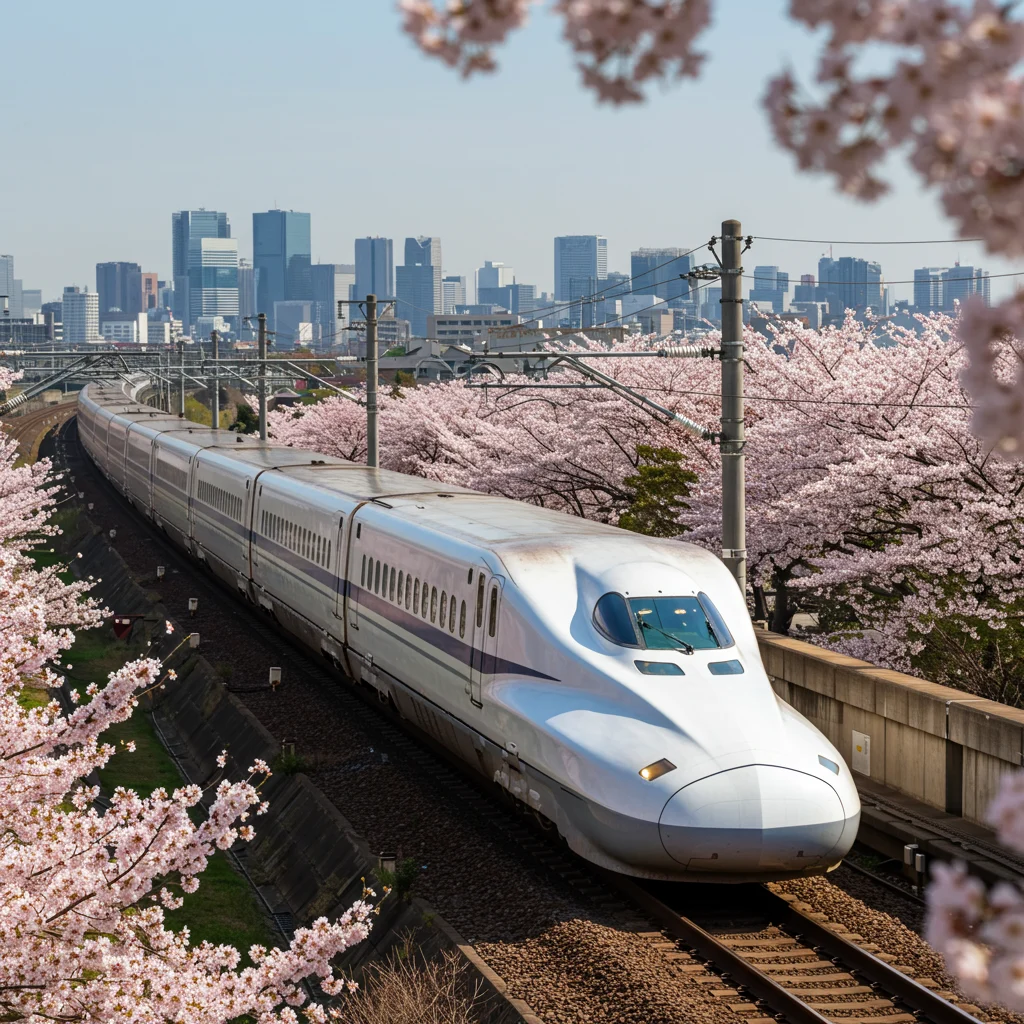
How Much Does a Bullet Train Trip Cost?
Ticket prices vary by route, class, and reservation type. Tokyo to Kyoto, for example, typically costs between 13,000 and 15,000 yen one way in ordinary class. Discounts are available for children and round-trip purchases.
Is Luggage Storage Available on the Shinkansen?
Yes, overhead racks and designated luggage spaces are provided. For larger bags, some trains require advance reservations for oversized luggage storage, so check your specific train’s policy before departure.
Can You Use Wi-Fi on the Bullet Train?
Many Shinkansen lines now offer free Wi-Fi, though connectivity may be intermittent in tunnels or rural areas. It’s a good idea to download maps and entertainment before boarding.
What Are the Best Apps for Navigating Tokyo’s Rail System?
Popular apps include Hyperdia, Japan Official Travel App, and Google Maps. These tools provide real-time schedules, platform information, and transfer guides for a stress-free travel experience.
Essential Japanese Phrases for Train Travel
Learning a few key phrases can make your journey smoother and more enjoyable.
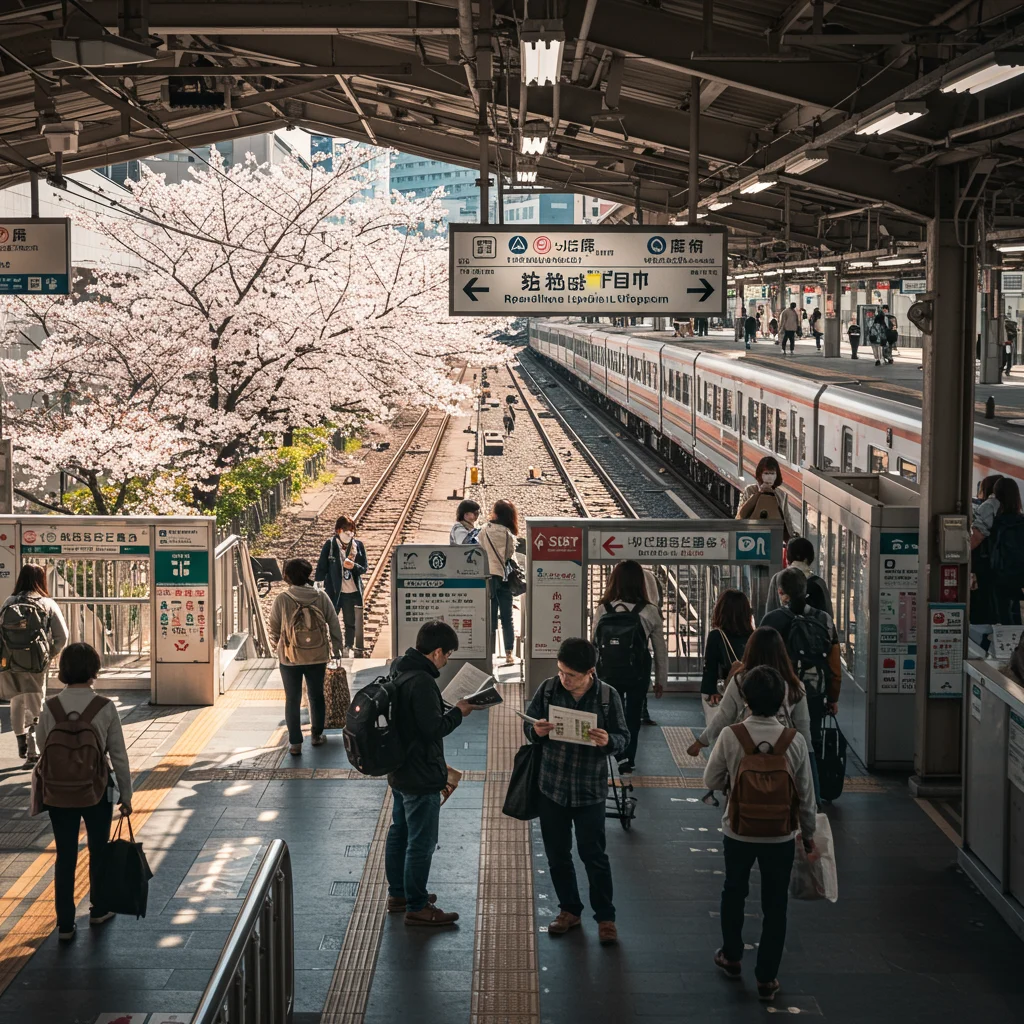
How to Ask for Directions in Japanese
Simple phrases like “Eki wa doko desu ka?” (Where is the station?) and “Kono densha wa [destination] ni ikimasu ka?” (Does this train go to [destination]?) are helpful when navigating stations or asking for assistance.
Buying Tickets and Communicating with Staff
Phrases such as “Shinkansen no kippu o kudasai” (Please give me a bullet train ticket) and “Yoyaku shite imasu” (I have a reservation) streamline interactions at ticket counters. Most staff are accustomed to assisting foreign travelers.
Safety Tips for Your Bullet Train Adventure
Japan’s rail system is among the safest in the world, but a few precautions can help you travel confidently.
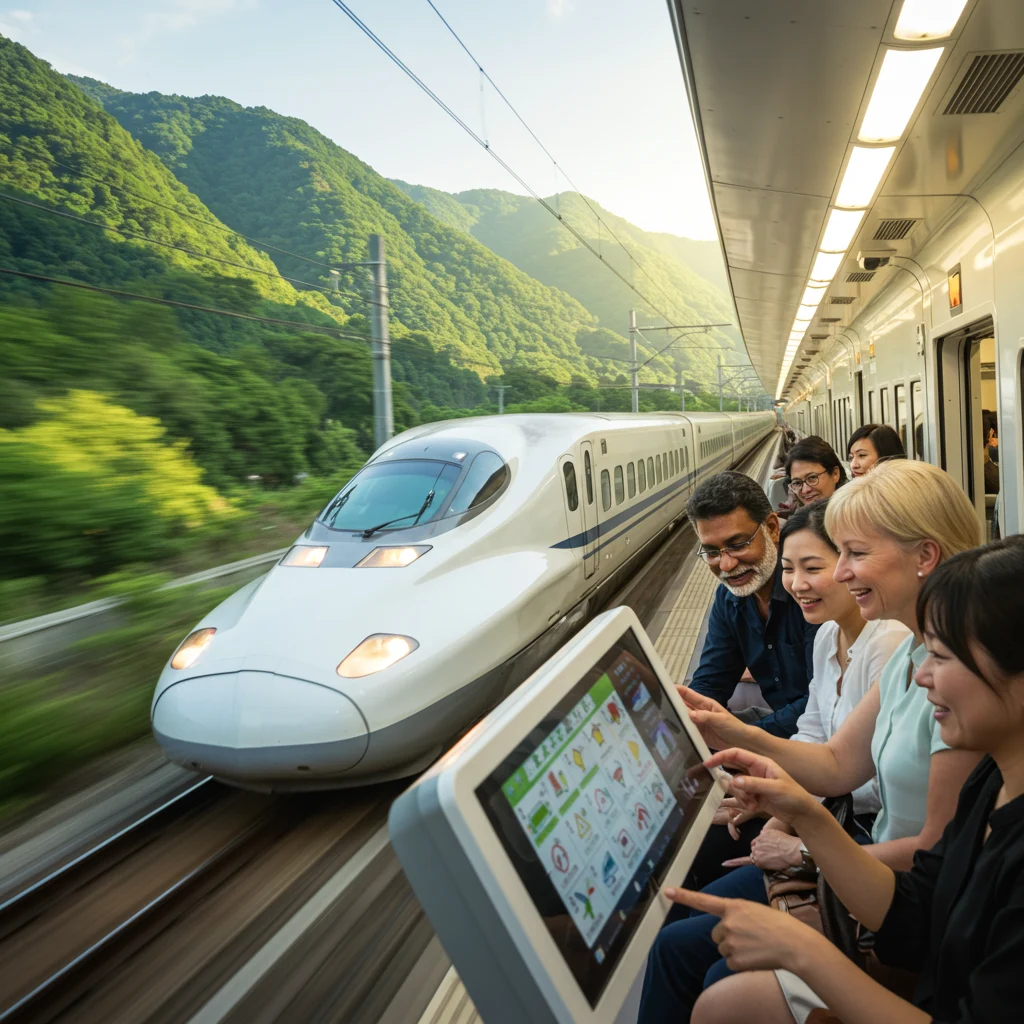
Staying Safe on the Train and at Stations
Keep personal belongings within reach, especially during busy periods. Follow platform markings and listen for announcements regarding train arrivals and departures.
Health Precautions and Accessibility
Most stations and trains are equipped for wheelchair access and offer priority seating. Hand sanitizer is widely available, and mask-wearing is common in public spaces.
Tips for Solo Travelers
Solo travelers will find Japan’s trains safe and welcoming. Choose well-lit areas, be mindful of the last train times, and keep emergency contact information handy.
For more tips on planning safe solo or group adventures, our guide to Hiroshima & Miyajima includes practical advice for travelers.
Sustainable Travel: Eco-Friendly Bullet Train Tips
The Shinkansen is an eco-conscious choice, but there are additional ways to travel responsibly.

How Green Is the Shinkansen?
Japan’s bullet trains are renowned for their energy efficiency and low emissions. Compared to air travel or private cars, the Shinkansen significantly reduces your carbon footprint.
Reducing Your Carbon Footprint in Tokyo
Choose reusable bottles and containers, recycle waste at stations, and walk or use public transport for short distances. Supporting local businesses near train stations also benefits the community and environment.
How to Book on Viator
Booking your Shinkansen tickets and related activities online streamlines your travel experience. Viator offers an easy-to-use platform where you can find tours, reserve train tickets, and book activities across Japan. Their customer support and clear cancellation policies provide additional peace of mind.

We recommend securing your tickets in advance, especially during peak seasons, to guarantee your preferred travel times. Viator’s user-friendly interface makes planning and booking your Tokyo bullet train adventure straightforward and reliable.
Conclusion: Your Unforgettable Tokyo Bullet Train Adventure Awaits
A journey on Tokyo’s bullet trains is more than a means of transportation—it’s an invitation to experience the harmony of speed and tradition, modernity and spirituality. By blending high-speed thrills with visits to ancient shrines, you create memories that will last a lifetime.

Final Tips for a Smooth and Memorable Journey
Pack light, plan ahead, and embrace each moment—from the rush of acceleration to the tranquility of a shrine’s inner garden. With thoughtful preparation and a spirit of curiosity, your Tokyo bullet train adventure will be smooth, safe, and deeply rewarding.
Share Your Tokyo Bullet Train Stories
We’d love to hear about your favorite routes, shrine visits, or unforgettable moments on the Shinkansen. For more inspiration and expert travel tips, visit Izase and join our community of passionate explorers.
“Disclaimer: This information is accurate to the best of our knowledge; however, there may be changes or mistakes. Please verify exact details on the Viator booking page.”

